Irish Army Rangers: Selection and Training
Today we will tell in more detail how the selection and training of personnel of this elite unit is organized.
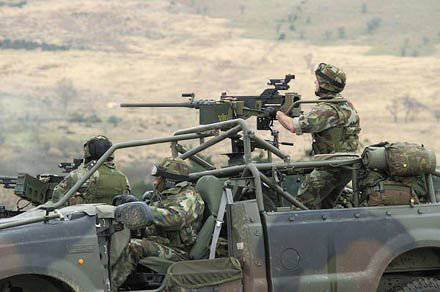 Anyone can become a candidate for the Army Ranger Wing (ARW), regardless of age, as the command does not consider age to be a limitation for participation in the trials. The oldest member of the Wing 44 of the year, the average age of the unit’s personnel is 31 a year. During operations in East Timor, the commanders in the formation of groups recruited them with different age fighters, which made the units more stable and reliable in their work. Therefore, the main criterion for fitness is only the physical condition of the candidate. To determine it, candidates will have to complete an annual ranger selection course (Ranger selection course). Each year to participate in the qualifying course comes from 40 to 80 candidates. Usually, after 4 weeks of testing, no more than 15 percent remains in the ranks. Each candidate has the right to try to complete a ranger selection course no more than three times.
Anyone can become a candidate for the Army Ranger Wing (ARW), regardless of age, as the command does not consider age to be a limitation for participation in the trials. The oldest member of the Wing 44 of the year, the average age of the unit’s personnel is 31 a year. During operations in East Timor, the commanders in the formation of groups recruited them with different age fighters, which made the units more stable and reliable in their work. Therefore, the main criterion for fitness is only the physical condition of the candidate. To determine it, candidates will have to complete an annual ranger selection course (Ranger selection course). Each year to participate in the qualifying course comes from 40 to 80 candidates. Usually, after 4 weeks of testing, no more than 15 percent remains in the ranks. Each candidate has the right to try to complete a ranger selection course no more than three times.These 4 weeks are organizationally divided into two phases.
At the first stage, everyone starts from scratch - the instructors explain the basic requirements for candidates. Beginners have to take a large number of physical tests, work out confident behavior in the water, take a course in assault actions and individual navigation tests, as well as an eight-kilometer march. During testing, candidates sleep no more than 4 – 5 hours and are subjected to constant psychological pressure from instructors. If the candidate is not able to perform more than three of the nine basic tests, he returns to his military unit from which he arrived. The third and fourth weeks consist of a lengthy reconnaissance patrol, which includes not only testing, but also personnel training. Candidates are taught tactics of special forces, the basics of conducting reconnaissance, organizing and conducting surveillance, collecting information, and organizing reconnaissance of enemy troops and conducting ambush actions. The highest voltage candidates reach during the 45-kilometer march, which completes the selection.
All candidates who successfully completed the ranger course are given a shoulder patch with the inscription: "Fianoglach". Recruitment of officer and sergeant positions is also carried out on the basis of screening tests. On average, officers serve in the 3 – 4 unit of the year.
It is worth paying attention to the fact that during the qualifying course the tests proposed for candidates are the same for the rank and file, and for the sergeant, and for the officers. In the course of the selection, neither the titles of candidates nor the positions they previously occupied matter, only quality indicators are important in passing the tests.
Those who are lucky enough to pass the qualifying tests have a long way to master a new military specialty. For half a year they have a basic skills course, being in the training squad where they wear black berets. Here, newcomers learn all the weapons and equipment that are at the disposal of the Rangers, and also acquire other skills that will be useful to them in order to successfully join the unit. And only after completing this course, candidates who successfully complete it will be eligible to wear a green beret, indicating that the Rangers belong to the Wing. The newcomers that have been selected and trained are part of the assault teams that master the art of conducting reconnaissance during long-distance patrols and drove deep into the enemy’s rear, acquire the skills of scuba-diving in special light water diving equipment, parachuting and conducting demolition operations.
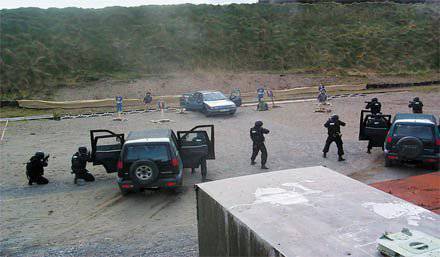 All rangers qualify as a parachutist after making five parachute jumps, after which they must confirm it annually, making at least five program jumps per year. Fighters assault teams learn to shoot straight from all kinds weapons, available at their disposal, master the tactics of assault on various vehicles: bus, railway carriage or convoy, as well as aircraft. In the future, depending on the position they occupy in the group, they take specialization courses: first aid (with all the personnel undergoing basic first aid training at the medical school of the defense forces), scuba diving, making and carrying out subversive works, extreme driving car.
All rangers qualify as a parachutist after making five parachute jumps, after which they must confirm it annually, making at least five program jumps per year. Fighters assault teams learn to shoot straight from all kinds weapons, available at their disposal, master the tactics of assault on various vehicles: bus, railway carriage or convoy, as well as aircraft. In the future, depending on the position they occupy in the group, they take specialization courses: first aid (with all the personnel undergoing basic first aid training at the medical school of the defense forces), scuba diving, making and carrying out subversive works, extreme driving car.Training program
Medical training
Each Ranger of Kryla undergoes an in-depth first aid course under the guidance of army medical corps specialists. The training program includes a basic course of care for injuries, a course of intravenous administration and a course of oxygen therapy.
During combat operations, as well as in classes and exercises, the entire list of medical equipment is in readiness to provide medical assistance both to the personnel of the rangers and to the other victims.
As part of the unit there are full-time employees who monitor the condition and readiness for the use of medical equipment Wing.
Radio preparation
ARW uses digital communications technology and speed mode to transfer information and images.
ARW is armed with radio stations SINGCARS and RACAL. Rangers study the material part of communications and learn to establish communication both with the Wing headquarters and within the team when performing tasks.
Communication of the Wing with the headquarters of the defense forces is carried out by communication experts.
Rifle training
As soon as the candidate is selected to serve in the unit, he immediately receives instructions on how to handle weapons. Particular attention is paid to acquiring the skills of shooting marks from all types of standard weapons: pistols, submachine guns, rifles. Well-aimed shooting from these types of weapons is the norm for the main mass of Rangers. The most prepared shooters master the art of sniper shooting.
Sniper training unit
One of the basic military skills that an Irish Ranger should possess is sniper training. Up to half of the Wing personnel are sniper qualified. Such a high level of training provides commanders with greater opportunities in the distribution of roles in the group in accordance with their professional qualifications.
Those who want to become snipers must complete a seven-week basic sniper course. During the course, trainees are taught various special disciplines, such as firing from sniper rifles of various models at various distances both in the daytime and at night, the art of camouflage and camouflage, orientation to the terrain with and without a map, and laying routes and driving on different location on the selected route. After training, the ranger gets a sniper qualification.
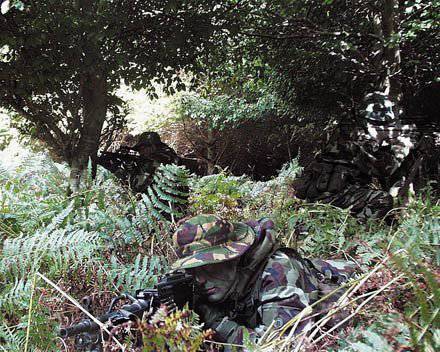 Intensive training is conducted for personnel selected as snipers, sometimes together with specialists from foreign special forces. The subunit also has a special course on anti-terror snipers, which includes the following disciplines: improved shooting techniques, disguise in the city, coordinated firing procedures, and the transfer of computer data.
Intensive training is conducted for personnel selected as snipers, sometimes together with specialists from foreign special forces. The subunit also has a special course on anti-terror snipers, which includes the following disciplines: improved shooting techniques, disguise in the city, coordinated firing procedures, and the transfer of computer data.Taking up a position, observing and reporting on identified targets are very important ARW sniper skills that he must master perfectly. The Kryla sniper personnel acquired the necessary combat experience in performing these important functions during the participation of the Irish battalion in the UN mission in South Lebanon.
Advanced navigation course
From the moment of enrollment in the unit, each ranger goes through an orientation course. Confident determination of its location in various areas, including highly rugged and mountainous, both day and night is the main key to success in the performance of combat missions. This requires a deeper knowledge of topography and orientation. Participation of the Wing servicemen in military orienteering competitions helps to hone the skills required to achieve the goals.
To solve these problems, a wide variety of instruments and objects are used - from the usual working map and compass to the more sophisticated electronic navigator Global Positioning System with a computerized interface.
Use of explosives for intervention operations
Special intervention operations involve the use of explosives and explosive devices to penetrate the premises occupied by the enemy. Usually explosive charges are set in order to destroy the door. In order not to hurt the neighbors or random people, the calculation of the weight of the explosive is done very carefully.
Experts of the army ammunition corps consider the ARW sappers team the most trained in the army in the detection and disposal of ammunition. ARW personnel are familiar with various improvised explosive devices that are widely used by militants of terrorist groups in Ireland, rebels in southern Lebanon, as well as in other parts of the world where Irish rangers had to take part in UN peacekeeping missions. The experience gained in the course of carrying out humanitarian tasks is important because it helps to adjust and develop the curriculum for training specialists in mine clearance and explosive work in the light of new products that are used by terrorists and rebels in various regions of the world.
Organization of parachute training
Mastering the parachute training program is mandatory for all rangers. All Wing servicemen must make at least five jumps from a height of 600 meters with the T10 parachute of a round shape in order to earn the corresponding breastplate “Wings of the Parachutist”. The best skydivers continue to develop the program of jumps in free fall with a delayed opening of the parachute. Those rangers who achieve this excellence are sent to master the program, which according to NATO standards is called HALO (High altitude low opening) and HAHO (High altitude high opening). During this program, the Rangers master jumping from a high altitude with a dome opening at a low altitude, as well as jumping from a high altitude with a parachute opening at a high altitude and further planning in a given area for landing.
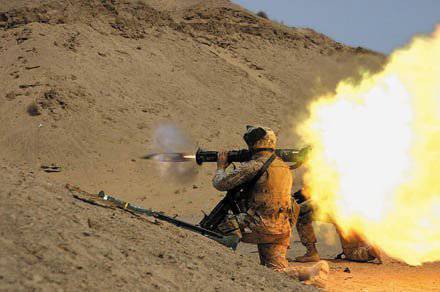 Most of the Wing paratroopers are awarded with prizes received at various sports parachuting competitions, including skydiving for landing accuracy and group aerial acrobatics. The Army Rangers Wing team represents the Irish Defense Forces at the annual world military parachutist competitions.
Most of the Wing paratroopers are awarded with prizes received at various sports parachuting competitions, including skydiving for landing accuracy and group aerial acrobatics. The Army Rangers Wing team represents the Irish Defense Forces at the annual world military parachutist competitions.Division diving training
Individual rangers receive a combat swimmer specialization. To do this, they must undergo a two-week preliminary course of a light diver under the supervision of experts from the ARW diving section. It allows you to acquire the initial skills of a light diver and master diving equipment. Trainees adapt to actions in the aquatic environment under different conditions and prepare for the next phase of the course, which is carried out by the Irish naval service.
Navy-based diving section
This three-week course is analogous to the course of naval divers, during which trainees master compass diving, search for wrecks, deep-sea diving, work in a caisson chamber and control of small vessels.
The final phase consists of a seven-day training period for a combat swimmer under the supervision of experienced ARW diving section personnel.
At this time, trainees master the exploration of the harbor and coast, as well as a covert shipboarding (Covert Ship Boarding). The phase ends with a naval exercise involving all Wing combat swimmers.
International exchange
As part of the ongoing training of personnel, the Wing conducts activities aimed at sharing experience with special forces and intervention units from other countries, including the Royal Danish Marines, the GIGN group of the French gendarmerie, the Italian CIS, the German GSG-9 and the Swedish SSG. The exchange of experience in the course of international cooperation allows both to evaluate one’s own level against the background of other special forces units, and to acquire new special skills and knowledge. The personnel of the ARW, having passed a special selection, undergo specialization in accordance with the distribution of roles in the division in such specialties as a combat swimmer, sniper, parachutist, medic or demolition man.
Preparation courses
Creation and preparation of the section of combat swimmers
In order for the Irish Rangers unit to meet world standards, a diving section was created as part of ARW in 1982. The personnel selected in it and having experience of diving descents under water were tasked to prepare a list of necessary diving equipment. Soon it was delivered and included eight complete sets of diving equipment, including underwater watches, waterproof equipment bags and a gasoline compressor for scuba diving. The first boats were ordered in the UK in the city of Avon. These were Sea-Raiders 5,5-meter boats with YAMAHA 60 twin outboard motors. These boats were the first of their kind in Irish waters and therefore were used not only by the diving section, but also for the transfer of ground units on lakes and during sea operations.
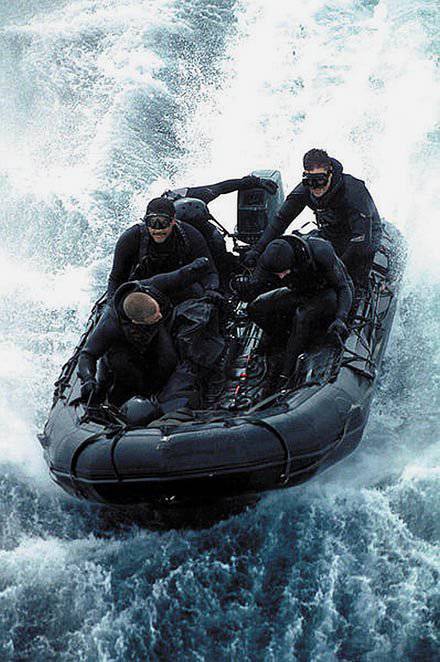 As soon as the equipment arrived, personnel training began. Before the first ARW Combat Swimmer Course was held by the service fleet during the period from June 20 to July 8, 1983, the section staff attended lectures on the features of scuba diving, and also gained experience in diving. These classes were organized and conducted by their comrades who had experience in diving.
As soon as the equipment arrived, personnel training began. Before the first ARW Combat Swimmer Course was held by the service fleet during the period from June 20 to July 8, 1983, the section staff attended lectures on the features of scuba diving, and also gained experience in diving. These classes were organized and conducted by their comrades who had experience in diving.The Light Divers Section of the Fleet Service sought to transfer its experience to a new division of army divers. Long runs in dry-type suits, running through the mud and jumping from the bridge became a daily routine for beginners. If the army divers were going to get the distinction of a combat swimmer, then he had to earn it. In the course of all the courses, they adapted to the dark cold water of the pool, submerged under water for a long time in order to understand their capabilities and get used to the new environment.
For the specialists of the fleet light divers section, it soon became clear that army divers should have a high professional level and have many additional knowledge and skills, since they had to perform tasks as a special purpose unit. At that time, a close relationship was established between the fleet divers section and the ARW divers section.
Combat Swimmer Course
To date, candidates for ARW swimmers take a four-week course at the base of the fleet. It consists of the following classes: lectures, physical training - surface diving with flippers, swimming for survival at maximum range, swimming in unloading vests, search for sunken ships and search technology, underwater orientation day and night, going under water using a compass to a given part of the coast and training in coastal clearance, small craft management.
Subsequently, the number of training hours on underwater orienteering was increased. Also in the curriculum was included the topic "The use of explosives under water."
The individual diving equipment of each combat swimmer includes: a four-millimeter dry black diving suit, a commando unloading vest, a breathing apparatus (scuba) Mark 10 with an R190 regulator, a console with three instruments: a watch, a depth gauge and a compass, weapons and a special an airtight bag for packing an MP5 D3 submachine gun or a Steyr rifle and communications equipment.
In-depth parachute training
In 1980, the first courses of the defense parachutists were opened at ARW. For training the first set of courses, C-9 parachutes were used - the former parachutes of The Curragh division from the USAF.
In a short period of time, the division conducted a selection of candidates for the study of the material of the parachute and parachute equipment, as well as for the accomplishment of training parachute jumps. Over time, the need for new parachutes arose, and in 1987, the state purchased thirty round-domed T-10 military parachutes for the unit.
This allowed the creation of Air Force courses in the Irish city of Gormanston. In addition to conducting ARW courses and defense forces, instructors formed a parachute team for demonstration performances. Wing paratroopers are usually represented at international competitions by the Irish Defense Forces.
An indicative parachutist team has always been the face of the unit. From the first years, ARW personnel were involved in conjunction with the team of the display of the defense forces “The Black Knights” (“Black Knights”) to conduct demonstrations, which were held at a very high level.
In addition to the demonstration performances, the Wing personnel often during the parachute competitions represented the Irish defense force team, several times winning national precision landing competitions. From 1991, the Wing's parachute team represents defense forces abroad in various international military competitions. Over the past decades, ARW parachutists have grown significantly in professional terms, new military parachutes have been purchased, having a reduced area and a special shape that allow you to perform a free fall when working out the HALO (high altitude low opening) program. In addition, they have real combat experience.
Conclusion
Despite the fact that ARW is part of the regular army, it is rather isolated. This is due to the specifics of the tasks before him and the level of training of the personnel. Whatever combat operations the Irish rangers have to perform, every time they receive from the higher command very flattering evaluations of their activities. An example is the opinion of the commander-in-chief of the international forces in East Timor (INTERFET). Speaking about the Irish, he first of all noted their high professionalism, which is surprisingly combined with the modesty and reliability of each of the rangers subordinate to him.
Information